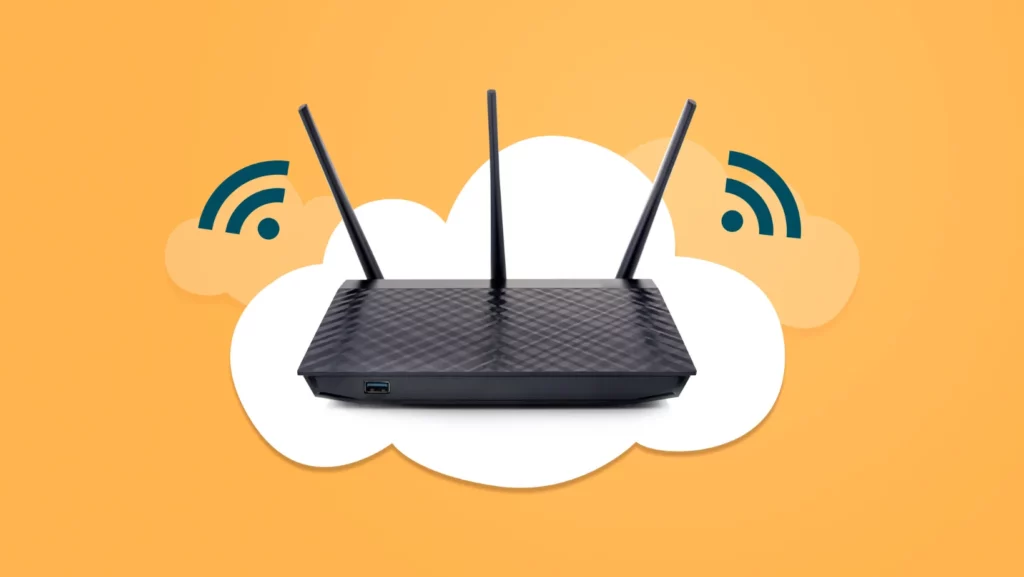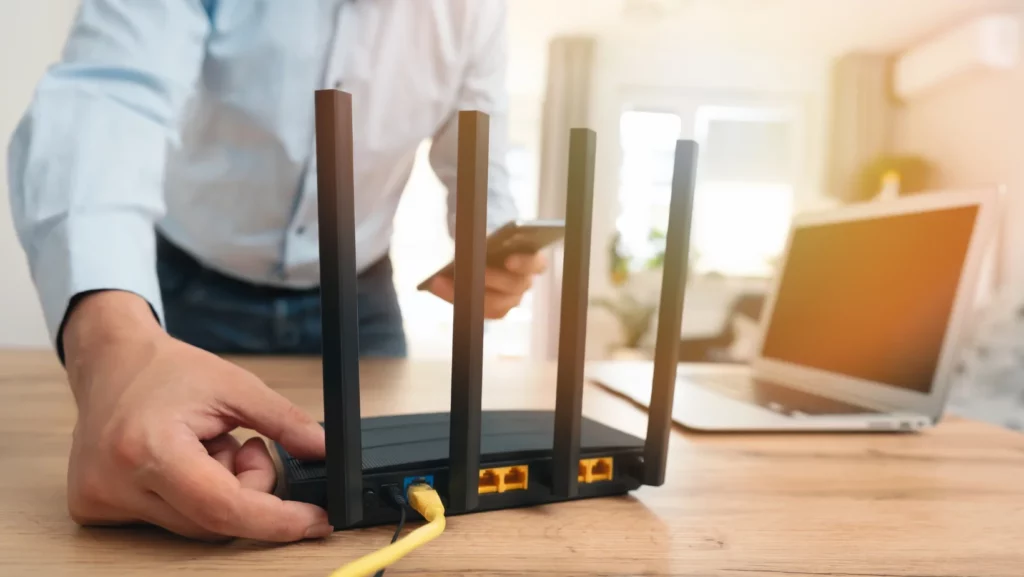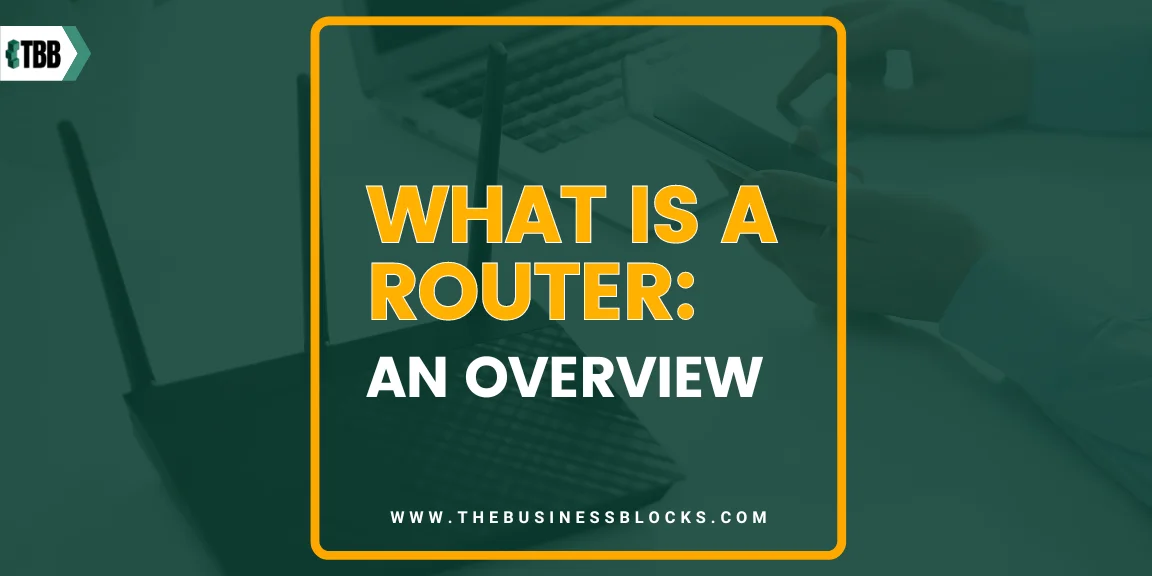Welcome to the world of routers—those unsung heroes that make your internet experience possible. If the internet were a bustling city, routers would be the traffic controllers, making sure data reaches its destination smoothly. But, what exactly is a router, and why should you care?
Think of a router as your digital postman, ensuring emails, videos, and cat memes reach your device without getting lost. It’s the gadget that connects all your devices to the internet and lets them talk to each other. So, whether you’re binge-watching your favorite show, video chatting with friends, or dominating online games, you can thank your trusty router.
In this overview, we’ll break down the techy stuff —just a simple guide to help you understand the wizardry behind that unassuming box in the corner.
Did you know?
- In the second quarter of 2021, the number of global server unit shipments reached 3.23 million units, an increase of over 400,000 units from the first quarter of 2021 where 2.8 million shipments were recorded.
- Cisco had a 39 percent share of the global router market in 2015.
Ever wondered about the silent superhero behind your internet connection?
Forget the confusion – imagine a router as the friendly traffic cop ensuring your devices can chat, stream, and game without a hitch. It’s the ultimate multitasker, connecting your phone, laptop, smart fridge – you name it!
Dream of a world where videos load in a snap, video calls are crystal clear, and your gadgets seamlessly sync up? That’s the promise of the router. It’s not just a box; it’s your ticket to a smoother, more connected digital life.
Let’s break it down together! Dive into the basics by keep reading and let the digital adventure begin!
Introduction to Router: Definition

In simple terms, a router is a specialized device that acts as the traffic manager of your digital network. It directs the flow of data, ensuring that information reaches its destination efficiently and without hiccups. Much like a postman delivering letters to the right addresses, a router plays a crucial role in connecting devices within your home or office to the vast expanse of the internet.
But the significance of a router goes beyond the physical box sitting on your desk or mounted on a wall. It is the silent orchestrator of your online experience, managing the ebb and flow of data as you stream videos, engage in video calls, or immerse yourself in online gaming.
Here’s a simplified explanation of how a router works:
- Data Routing:
- Incoming Data: When you request a website or any online content, your computer sends a request in the form of data packets.
- Router’s Role: The router receives these data packets and examines the destination address on each packet.
- IP Addresses:
- Device Identification: Every device connected to the internet has a unique identifier known as an IP address.
- Router’s Role: The router uses the destination IP address to determine where to send each data packet.
- Local Network Management:
- Local Devices: If the destination IP address is within your local network (devices connected to your router), the router ensures the data reaches the correct device.
- Internet Connection:
- External Requests: If the destination is outside your local network, the router sends the data packets to your Internet Service Provider (ISP).
- ISP Interaction: The ISP then forwards the packets through the broader internet to reach the destination.
- Response Routing:
- Return Path: When the requested data is sent back to your device, the router remembers the original request and directs the incoming data to the correct device in your local network.
- Wi-Fi Broadcasting (Wireless Routers):
- Wireless Signal: If you’re using a wireless router, it broadcasts a Wi-Fi signal allowing devices to connect wirelessly.
- Authentication: Devices within range can connect after providing the correct authentication (usually a password).
- Security Measures:
- Firewall: Routers often have built-in firewalls to protect your local network from unauthorized access.
- Network Address Translation (NAT): The router assigns a temporary local IP address to each device within your network, adding an extra layer of security.
In essence, a router acts as a digital traffic controller, directing data between devices within your local network and the vast network of the internet. It ensures that your requests reach their destinations and that the responses find their way back to the right devices, all while maintaining security measures to safeguard your digital interactions.
The Evolution of Routers: From Basics to Cutting-Edge Technology
The evolution of routers has been a remarkable journey, transforming from rudimentary network connectors to cutting-edge technology marvels that power our modern digital experiences. In the early days, routers focused on fundamental tasks, primarily directing data between different networks. As the internet found its way into homes, routers adapted to cater to the needs of individual households, becoming the central hubs orchestrating local networks. This marked the inception of consumer-grade routers, simplifying the connection of multiple devices within a single home and laying the groundwork for the interconnected world we know today.
The wireless revolution brought about a significant shift, liberating users from the constraints of physical cables. Wi-Fi routers emerged, enabling the seamless connection of devices without the hassle of cords. Over time, routers evolved to support higher speeds, increased bandwidth and introduced smart features. The integration of smart technology allowed for remote management via smartphone apps, advanced security protocols, and even the incorporation of routers into the Internet of Things (IoT) ecosystem.
The latest frontier includes the integration of 5G technology, promising unparalleled speeds and connectivity, signaling a new era of high-performance wireless networking. In essence, the evolution of routers reflects a dynamic adaptation to the changing landscape of technology and user demands, shaping the core infrastructure of our interconnected digital lives.
What Sets Routers Apart?

What sets routers apart is their talent for managing internet traffic like a digital traffic cop. Unlike simple modems, routers are the multitasking maestros that connect all your devices to the internet and make sure they can chat with each other. It’s like having a smart organizer for your digital party!
Here’s why routers are special:
Traffic Director:
Routers decide where data should go, directing it to the right devices in your home network. It’s like a guide making sure everyone gets to the internet or talks to each other hassle-free.
Device Connector:
They link up all your gadgets – phones, laptops, smart fridges – forming a digital network. So, when you’re streaming a show on your tablet or playing games on your console, the router ensures everyone’s in sync.
Internet Messenger:
When you want to check emails, watch videos, or scroll through social media, the router helps your devices communicate with the internet, bringing back the information you asked for.
Security Guard:
Routers keep your digital space safe by watching out for any sneaky attempts to access your network without permission. They act like a digital bouncer, letting only the guests in.
Routers are like the superheroes of your internet connection, managing the traffic, connecting your gadgets, and ensuring a secure digital hangout for all your devices. They’re not just boxes with blinking lights; they’re the wizards making your online world work seamlessly!
3 Main Functions of a Router
The three main functions of a router—data packet routing, network address filtering, and acting as an intermediary between networks—combine to make routers indispensable for directing traffic, enhancing security, and enabling connectivity in the complex landscape of modern networks.
Here’s a brief explanation of the three fundamental functions of a router:
1. Data Packet Routing:
Routers serve as traffic directors, guiding data packets from their source to their intended destination. They examine the destination IP address of each packet and determine the most efficient path for it to travel through the network.
This function ensures that data reaches its destination swiftly and efficiently, optimizing the flow of information within local networks and facilitating communication between different networks.
2. Network Address Filtering:
Routers use network address filtering to control which devices can access or communicate with the network. This involves filtering data packets based on source and destination IP addresses, allowing or denying access accordingly.
Network address filtering enhances security by regulating access to the network, preventing unauthorized devices from entering, and protecting against potential threats or attacks.
3. Intermediary Between Networks:
Routers act as intermediaries that connect different networks, including local area networks (LANs) and the broader internet. They manage the flow of data between these networks, ensuring seamless communication.
By bridging different networks, routers enable devices within a local network to access resources and information from external networks, such as the Internet. This function is crucial for the interconnected nature of modern communication.
Everyday Wonders: Exploring Router Applications in Daily Life

Routers, those unassuming devices with blinking lights, play a pivotal role in our daily lives, quietly enabling a seamless digital experience. From the moment you wake up to the time you hit the hay, routers are behind the scenes, making the magic happen.
Let us give you some examples below:
1. Morning Connectivity Magic: As you reach for your smartphone to check the weather or catch up on news, your router connects you to the internet, ensuring you start your day well-informed.
2. Breakfast Entertainment Hub: While enjoying your breakfast, if you decide to stream your favorite music or a quick video, your router effortlessly delivers the entertainment without any interruptions.
3. Work or Study Connection: Heading to work or school, your laptop seamlessly connects to the router, enabling you to access emails, join virtual meetings, or collaborate on projects.
4. Family Entertainment Center: When the family gathers in the evening for a movie night or online gaming session, your router manages the traffic, preventing buffering, and ensuring everyone enjoys their digital experience.
5. Smart Home Harmony: Smart devices like thermostats, security cameras, and voice assistants rely on the router to communicate and function, creating a seamlessly connected and efficient home.
6. Online Shopping Expeditions: Whether you’re browsing your favorite online stores or making purchases, your router ensures a smooth and secure shopping experience.
7. Video Chatting with Loved Ones: Connecting with family and friends through video calls becomes possible and hassle-free, thanks to your trusty router managing the data flow.
8. Social Media Scroll Sessions: Whether you’re sharing updates or scrolling through social media feeds, your router is the silent companion facilitating your digital social interactions.
9. Fitness and Wellness Tracking: Smart fitness devices and health trackers stay connected through the router, providing you with real-time health and wellness data.
10. Bedtime Connectivity Comfort: Even as you unwind with some bedtime reading on your tablet or enjoy a podcast, your router ensures a peaceful and uninterrupted digital wind-down.
In every moment of your day, from the mundane to the extraordinary, your router silently works behind the scenes, enabling the everyday wonders of our digital age. It’s not just a device; it’s the catalyst that seamlessly weaves technology into the fabric of our lives.
Troubleshooting 101: Common Router Issues and Solutions
Navigating the digital realm isn’t always smooth sailing, and when it comes to routers, hiccups can happen. Fear not! Here’s a handy guide to troubleshooting some common router issues and sailing through connectivity challenges:
1. Slow Internet Speed:
- Issue: Buffering and sluggish internet.
- Solution: Check for background downloads, limit connected devices, or consider upgrading your internet plan.
2. Connection Dropouts:
- Issue: Intermittent disconnections.
- Solution: Reboot your router, relocate it to reduce interference, or update its firmware.
3. Wi-Fi Dead Zones:
- Issue: Poor connectivity in certain areas.
- Solution: Opt for a Wi-Fi extender, reposition your router, or consider a mesh Wi-Fi system for broader coverage.
4. Forgotten Password:
- Issue: Can’t connect due to a lost Wi-Fi password.
- Solution: Access router settings using a wired connection, reset the password and update devices with the new credentials.
5. Firmware Outdated:
- Issue: Router not performing optimally.
- Solution: Regularly check for firmware updates on the router’s admin page and install the latest version.
6. Connection Security Concerns:
- Issue: Suspected unauthorized access.
- Solution: Change default login credentials, enable WPA3 encryption, and monitor connected devices for unfamiliar ones.
7. Overheating:
- Issue: Router becoming excessively hot.
- Solution: Ensure proper ventilation, keep the router in a cool place, and consider a fan or cooling pad.
8. DNS Issues:
- Issue: Websites not loading or resolving slowly.
- Solution: Change your DNS settings to Google’s (8.8.8.8 and 8.8.4.4) or your ISP’s recommended DNS.
9. Device Connection Problems:
- Issue: Certain devices can’t connect.
- Solution: Restart the problematic device, forget and reconnect to the Wi-Fi, or check for MAC address filtering.
10. Factory Reset Dilemma:
- Issue: Considering a factory reset.
- Solution: Use this as a last resort. Save settings before resetting, as this erases all configurations.
Remember, troubleshooting can vary based on router models, so always refer to your router’s manual or online support resources for model-specific guidance. With these tips, you’ll be ready to tackle common router issues and keep your digital voyage smooth and steady!
Tips to Get the Most From Your New Router

Getting the most out of your new router involves optimizing its performance, enhancing security, and ensuring a seamless internet experience. Here are some tips to help you make the most of your router:
- Positioning Matters:
- Place your router in a central location in your home to ensure even coverage. Avoid obstructions like walls and electronics, and keep it elevated for better signal distribution.
- Update Firmware Regularly:
- Check for firmware updates on your router manufacturer’s website and install them. Regular updates enhance performance, and security, and may introduce new features.
- Secure Your Wi-Fi Network:
- Change the default login credentials to prevent unauthorized access. Use a strong, unique password and enable WPA3 encryption for enhanced security.
- Set a Strong Wi-Fi Password:
- Create a robust Wi-Fi password to prevent unauthorized users from accessing your network. Avoid using easily guessable passwords and consider using a combination of letters, numbers, and symbols.
- Create a Guest Network:
- Set up a separate guest network to keep your main network secure. Guests can connect without accessing your private files or devices.
- Optimize Channel Selection:
- Choose the least congested Wi-Fi channel to reduce interference from neighboring networks. Many routers have an automatic channel selection feature.
- Quality of Service (QoS) Settings:
- Prioritize specific devices or types of traffic using QoS settings. This ensures that crucial activities like video calls or online gaming get priority for smoother performance.
- Monitor Connected Devices:
- Regularly check the devices connected to your network. Remove any unfamiliar devices and update passwords if necessary.
- Use Wired Connections for High-Bandwidth Activities:
- For bandwidth-intensive activities like gaming or streaming, consider using wired connections via Ethernet cables for a more stable and faster connection.
- Invest in Mesh Wi-Fi for Larger Spaces:
- If you have a large home or experience Wi-Fi dead zones, consider a mesh Wi-Fi system. It extends coverage by using multiple interconnected routers.
- Regularly Restart Your Router:
- Give your router a break by restarting it occasionally. This helps clear temporary glitches and can improve performance.
- Check Internet Speed Regularly:
- Use online speed tests to check your internet speed. If it’s consistently lower than expected, contact your internet service provider (ISP) for assistance.
By implementing these tips, you’ll not only optimize your router’s performance but also enhance the security and reliability of your home network, ensuring a smoother and more enjoyable internet experience.
Frequently Asked Questions About What is a Router: An Overview
Q: What is a router, and what does it do?
A: A router is a networking device that directs data traffic between devices within a local network and facilitates communication between the local network and the broader internet. It serves as a central hub, managing the flow of data and ensuring seamless connectivity.
Q: How does a router work?
A: Routers work by examining the destination IP address of data packets and directing them to the appropriate devices within a local network or forwarding them to the internet. They also use routing protocols, manage network addresses through Network Address Translation (NAT), and play a role in securing the network.
Q: What are the key features of a router?
A: Key features of routers include packet forwarding, routing information protocols, network address filtering, security measures such as firewalls, wireless broadcasting for Wi-Fi, and the ability to connect and manage various devices within a network.
Q: How do I set up and secure my router at home?
A: Follow the manufacturer’s instructions to physically set up your router. Secure it by changing the default login credentials, enabling encryption (WPA3 is recommended), setting up a strong Wi-Fi password, and creating a separate guest network. Regularly update firmware for added security.
Q: What are common issues with routers, and how can I troubleshoot them?
A: Common router issues include slow internet, connection dropouts, Wi-Fi dead zones, forgotten passwords, outdated firmware, security concerns, overheating, DNS issues, device connection problems, and potential considerations for a factory reset. Troubleshoot by rebooting the router, relocating it, updating firmware, adjusting settings, and considering device-related solutions.
Final Thoughts
Routers are like digital traffic cops, making sure our devices can talk to each other and the internet without getting lost. They’re the reason you can binge-watch shows, play games online, and connect with friends.
Think of a router as the superhero behind the scenes, directing data traffic and ensuring your internet experience is smooth. From managing Wi-Fi to securing your network, it’s the unsung hero that keeps the digital show running. It’s the quiet champion of making sure your digital world is always connected and ready for action. That’s a wrap on routers—making our online lives a whole lot simpler!

